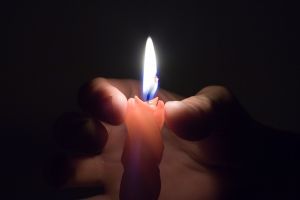Peer Mediation Team Building Activities
This book is a collection of activities I have found in the book How to Create Positive Relationships with Students by Michelle Karns. In picking these activities, I hope the students in the peer mediation program get to know one another better, and continue to grow as individuals. Play becomes an opportunity to open communication windows for children, and hopefully these activities will encourage the peer mediators to feel more like a unit.
I chose one lesson for each month and with each lesson, I also included encouragement notes that the peer mediators can copy, decorate and give to teachers and staff. Hopefully, these acts of kindness and encouragement will uplift everyone’s spirits and continue to make the school an enriching place to work as well as a nurturing place for students.
September: Find Me
October: Pretzels and Knots
November:How Many?
December:Building Blocks
January:Turning it Around
February:Crazy Eights
March:My Many Faces
April:Button Button
May:Thank You Notes
September
Since some of the kids may not know each other well, I thought “Find Me” would be a good group activity to break the ice, and to get to know each other better. Through this, the kids will learn cooperation and team development and hopefully make them feel like an important part of the group.
October
Many times, problems take teamwork to solve. Through the activity “Pretzels and Knots,” the kids will be able to put their problem solving abilities to work, while learning to value and trust others’ opinions and input.
November
How many?” is an activity for the kids that encourages critical thinking, and positive social orientation. When the peer mediators engage in this activity, we hope that they will see how alike they are to other children, and be positive role models for the rest of the children at school.
December
Another activity to encourage critical thinking, “Building Blocks” helps children realize how important it is to gather all the information behind a scenario. This activity also promotes good communication in the group, and also teaches that when working in the peer mediation group, it is important to think of other reasons why someone may be having a conflict and that it might not be the surface issue.
January
Having the peer mediators understand the importance of conflict resolution is one of the key building blocks of the program. Reflective thinking is a way to come to possible solutions, so I thought the activity, “Positive, Negative” would be a helpful way for them to practice their skills.
February
Tolerance for others is a foundation for a peaceful environment. Since many of the students are different from others, it is important for the students to recognize that it is ok to be different and to value each other’s individual traits. It is also essential to understand that even though there are differences between each other, in many ways, everyone is alike. “Crazy Eights” is a starting point to this understanding.
March
In every conflict, there is a multitude of emotions lying underneath. Showing these emotions is a normal thing, and learning positive ways to show them is vital to a healthy and peaceful environment. My many Faces” is an activity to help kids own their emotions and understand that personal worthiness can come from them.
April
“Button Button” is a way for the group to appreciate each other’s talents, show emotions and learn different ways of communication. This activity could also be used as an encouragement for the entire school and teachers.
May
As the school year comes to a close, it is important to thank those who have made a difference in one’s life. Thank you notes” is a way for the group to thank each other for all the positive things they have done, and for the ways they have helped each other throughout the year. This also can be used as a time for encouragement for teachers, staff or other students that have helped make the school a better place!
References
All activities and encouragements were borrowed.
Karns, M. (1994). How to Create Positive Relationships with Students. A Handbook of Group Activities and Teaching Strategies. Research Press, Champaign, Illinois.
Miller, L. (2002). Meaningful Motivators. Monthly Appreciation Motivators & Character Trait Motivators. Marco Products, Warminster, Pennsylvania.
Reference:
- Please see article for references.




